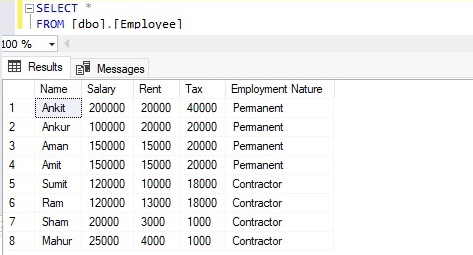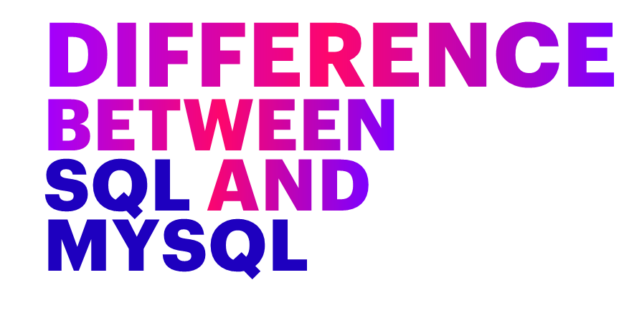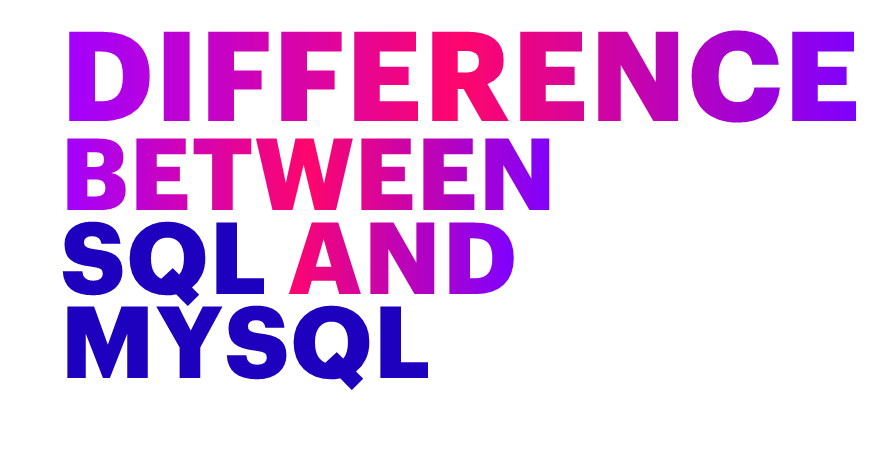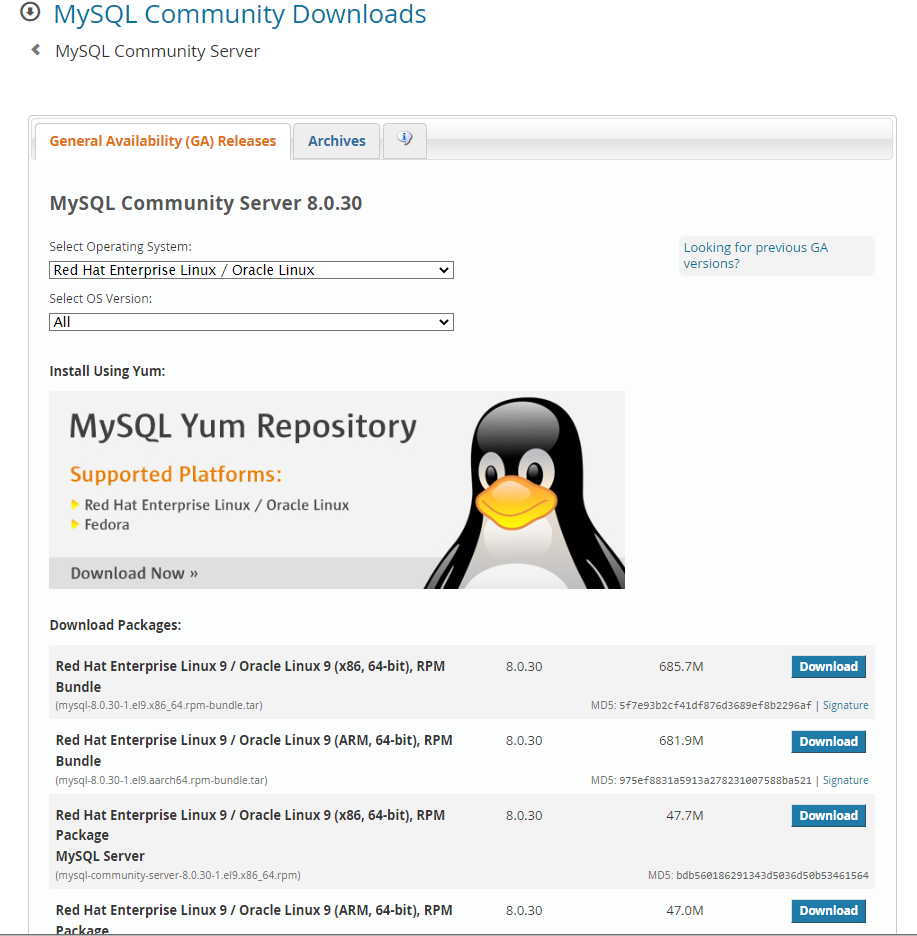This article will explain the difference between SQL and MySQL. Many people get confused between several database terms like SQL, MySQL, SQL Server, or other SQL-related phrases. If you are a database professional, then you should be aware of the difference between SQL and MySQL or other phrases which have SQL words included like PostgreSQL, Cloud SQL, TSQL, etc. Most of these terms are divided between a query language and database software like TSQL and SQL are query languages whereas MySQL, SQL Server, and PostgreSQL are database software.
Data has become very crucial in the last few decades and that is why many database products, tools, and software came into the market to easily store, access manage, safeguard, and make data always available for business through this database software and products. Database systems have evolved from simple database management systems to relational database management systems to NoSQL and NewSQL because of data growth and its nature over time.
The RDBMS (Relational Database Management System) system became extremely popular because of its feature-rich functionalities, flexibility and it addressing business needs efficiently. Many RDBMS-based database software products gain popularity over time like Oracle, SQL Server, MySQL, and DB2 over the last few decades. These days the nature of data and its accessibility has changed because of digital modernization so there is a new requirement came to address modern days database challenges and this has enforced various product owners and companies to think beyond RDBMS and then NoSQL (Not Only SQL) concept came in on which many databases software products are gaining popularity. One such NoSQL-based product that is very popular these days is MongoDB.
Our topic is to understand the difference between SQL and MySQL so let’s stick to the topic and get back to the Relational database systems.
Let’s start with understanding the basic terms used in this article while explaining the difference between SQL and MySQL.
- RDBMS (Relational Database Management System)
- Database
- SQL
- Query
Let’s first understand the above terms in the below few lines.
A Relational Database Management system is software that is used to create the databases in which we store the records or data for future uses like inserting, modifying, deleting, or retrieving it for various business needs. As its name starts with ‘relational’ so it means data stored in the database tables in a relational form and because of this feature you can access any data based on its relation to the other data. There are a lot of benefits of using RDBMS software to store data like easy accessibility, data accuracy, integrity, flexibility, etc.
A database is a collection of objects that stores users’ data in a specific form so that we can insert, modify, delete, or retrieve this data for our business needs. We can create various database objects inside the database like Tables, Views, Triggers, stored procedures, or functions.
The full form of SQL is Structured Query Language. This language is used to create queries to perform various operations like database creation, modification, and data access in the databases which are created in RDBMS software like SQL Server, Oracle, or even MySQL.
The Query is a collection of SQL statements or commands which is written in a logical way to execute against a database to access or manipulate the databases, its objects, or data stored in it.
There are several software products available in the market to create relational databases to store business data as I have described above. One of the popular RDBMS systems is MySQL which stores data in the rows and columns format, and we can access data stored in these rows and columns using SQL language. So, SQL is a language that is used to access and modify data in the databases of almost all RDBMS software products like Oracle, SQL Server, MySQL, and DB2.
SQL – Structured Query Language
To understand the difference between SQL and MySQL, first, we need to understand both terms. SQL is a query language that is approved as the standard query language for RDBMS database systems to manipulate databases by ANSI (American National Standards Institute). We can use SQL language to create queries to insert, update and delete records in the databases. We can also use it to retrieve data from the databases.
SQL language can also be used to create databases and their objects like tables, views, triggers, stored procedures, and permissions. Many database vendors have created their version of the language to access and manage their database systems, but all these dialects are based on SQL language only. SQL Server has its language T-SQL whereas Oracle has PL-SQL but this does not mean that Oracle and SQL Server databases cannot be accessed and manipulated using standard SQL language. We can use SQL in these database systems as well.
Some of the popular SQL statements are SELECT, UPDATE, INSERT, DELETE, and WHERE. Here is a screenshot in which I have executed a simple SELECT statement to retrieve all records stored in a table named Employee.
|
1 2 3 |
SELECT * FROM [dbo].[Employee] |
We can see all records stored in this table. You can filter this result set based on some condition by adding a WHERE clause in this statement.

Next, let’s discuss MySQL in the next section.
MySQL
MySQL is an open-source database management system that is used to create a database so that users can save and secure their data for various business requirements. It was released in 1995 as the first internal release and its latest release is MySQL 8.0.
This database software can be installed on a machine running with any operating system whether it is Windows, Linux, Ubuntu, macOS, SUSE, or Oracle Solaris. We install this software to create a database to store our data in the rows and columns format which can be later accessed and retrieved using SQL language. Here you can understand the difference between SQL and MySQL based on their uses.
MySQL offers many features using which users can get a stable, reliable, and powerful database solution. Some of these features are its high performance, security, on-demand scalability, and a reliable, huge set of data types.
You can download MySQL software by accessing the attached link. You need to select the target operating system on which you want to install this software. I have downloaded MySQL software to install it on Red hat Linux as shown in the below image. You will get the below screen once you access the attached link to download the MySQL community server. Choose your desired operating system and its OS version from the drop-down and respective installers will be listed to download.
Difference between SQL and MySQL
This section will explain line by line difference between SQL and MySQL database systems. Please find it in the below bullet points.
Difference between SQL and MySQL:
- SQL is a query language whereas MySQL is software.
- As I have stated above that SQL is a standard language to manage and access data from databases hosted on various RDBMS software products like Oracle, SQL Server, MySQL, and DB2 whereas MySQL is one of the many RDBMS software products which can be used to create databases and store data in relation form and that data will be accessed and managed by the SQL language.
- The SQL language is a common language among all RDBMS-based database products like you can use it to access and manipulate your data in any of the RDBMS products like SQL Server, Oracle, or MySQL whereas MySQL is a product like other database products.
- MySQL facilitates users to store, safeguard, modify and process their data in an organized manner whereas SQL is a query language using which users can access and manage the data stored inside the MySQL databases.
- MySQL provides multiple utilities like workbench to create, manage and design databases whereas SQL Server does not provide any additional features or utilities apart from having its syntaxes to write queries for various operations.
- MySQL is an open-source database system so you can get support from its open-source community whereas SQL is not an open-source language rather you need to rely on your respective product vendor to support you during any issue.
- The syntax for SQL statements does not change much and it keeps on remaining the same for all RDBMS software products whereas MySQL gets frequent updates with new enhancements in its every release version.
This section has described the basic difference between SQL and MySQL.
Conclusion
This article has explained the difference between SQL and MySQL. We learned what is SQL and what is MySQL and its uses. SQL is a query language whereas MySQL is an RDBMS software that is used to store and manage users’ data. We can use SQL language to access and manipulate the data stored in the MySQL database system.
I hope you found this article useful. I would also encourage you all to write your feedback in the comment section so we can improve in a better way.
- Configure backup storage redundancy for Azure Cosmos DB account - May 15, 2024
- Difference between SQL SELECT UNIQUE and SELECT DISTINCT - January 16, 2024
- How to do a group by clause - April 12, 2023



